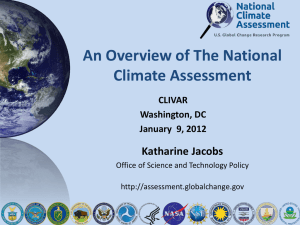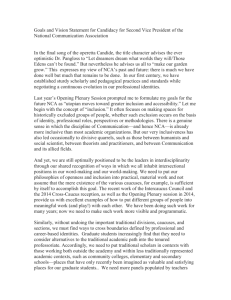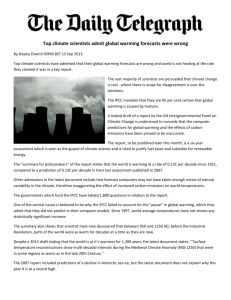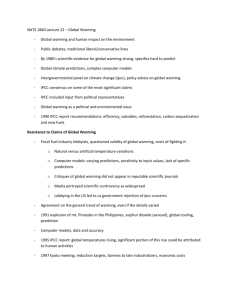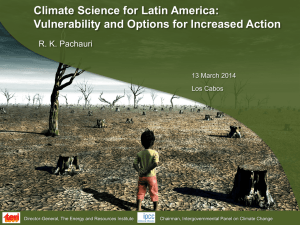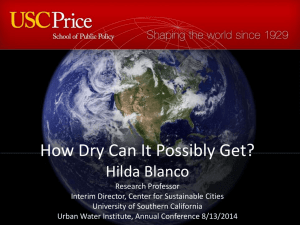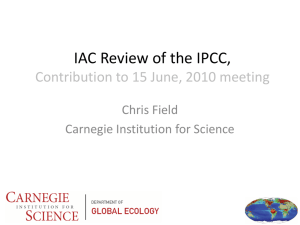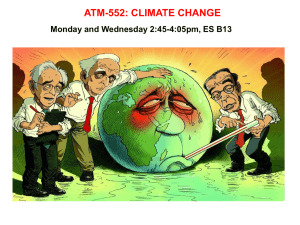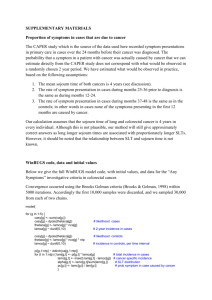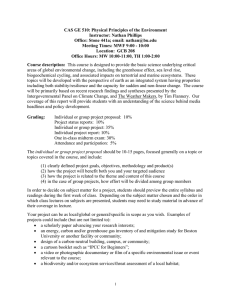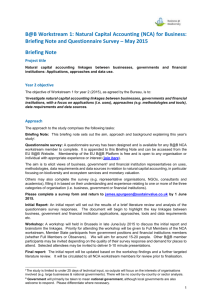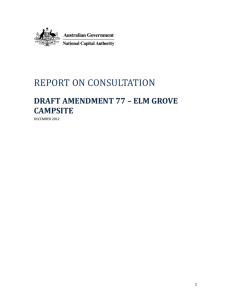NCA IPCC comparison
advertisement
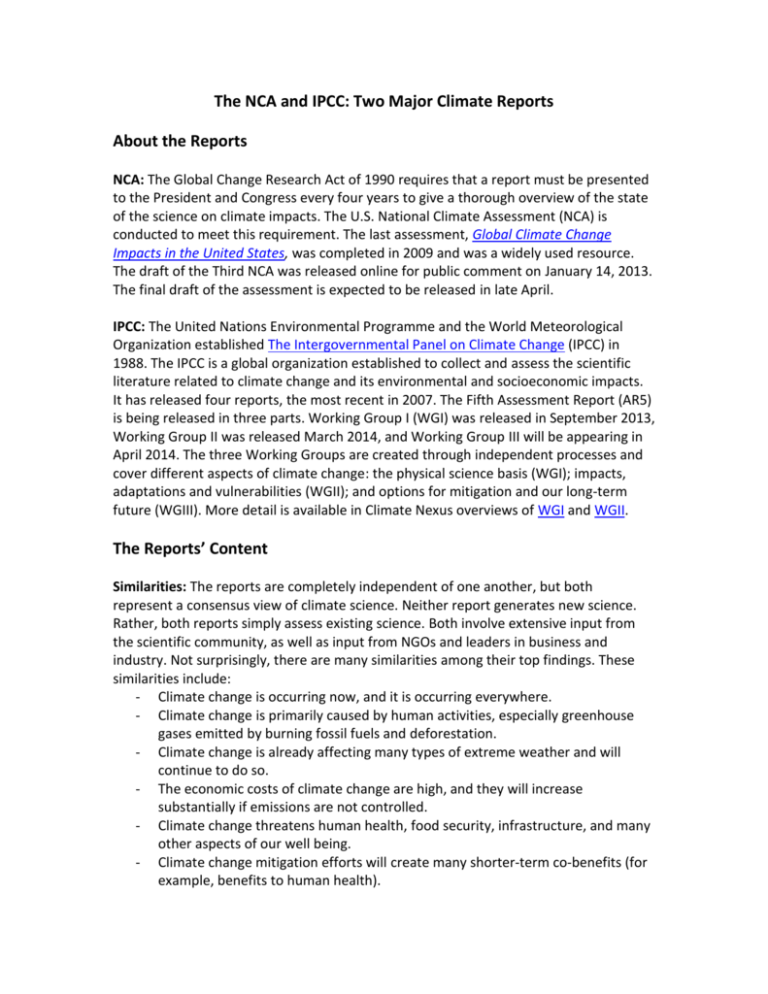
The NCA and IPCC: Two Major Climate Reports About the Reports NCA: The Global Change Research Act of 1990 requires that a report must be presented to the President and Congress every four years to give a thorough overview of the state of the science on climate impacts. The U.S. National Climate Assessment (NCA) is conducted to meet this requirement. The last assessment, Global Climate Change Impacts in the United States, was completed in 2009 and was a widely used resource. The draft of the Third NCA was released online for public comment on January 14, 2013. The final draft of the assessment is expected to be released in late April. IPCC: The United Nations Environmental Programme and the World Meteorological Organization established The Intergovernmental Panel on Climate Change (IPCC) in 1988. The IPCC is a global organization established to collect and assess the scientific literature related to climate change and its environmental and socioeconomic impacts. It has released four reports, the most recent in 2007. The Fifth Assessment Report (AR5) is being released in three parts. Working Group I (WGI) was released in September 2013, Working Group II was released March 2014, and Working Group III will be appearing in April 2014. The three Working Groups are created through independent processes and cover different aspects of climate change: the physical science basis (WGI); impacts, adaptations and vulnerabilities (WGII); and options for mitigation and our long-term future (WGIII). More detail is available in Climate Nexus overviews of WGI and WGII. The Reports’ Content Similarities: The reports are completely independent of one another, but both represent a consensus view of climate science. Neither report generates new science. Rather, both reports simply assess existing science. Both involve extensive input from the scientific community, as well as input from NGOs and leaders in business and industry. Not surprisingly, there are many similarities among their top findings. These similarities include: - Climate change is occurring now, and it is occurring everywhere. - Climate change is primarily caused by human activities, especially greenhouse gases emitted by burning fossil fuels and deforestation. - Climate change is already affecting many types of extreme weather and will continue to do so. - The economic costs of climate change are high, and they will increase substantially if emissions are not controlled. - Climate change threatens human health, food security, infrastructure, and many other aspects of our well being. - Climate change mitigation efforts will create many shorter-term co-benefits (for example, benefits to human health). Differences: The reports do not significantly differ on the science points. However, they focus on different topics to different degrees and at different scales. - The draft Chapter 19 of the IPCC’s WGII stresses that the costs of climate change impacts will be lowest in a scenario where emissions reduction begins immediately. NCA focuses much less on long-term cost analysis under emissions reduction scenarios. - WGII stresses that there are limits to the potential for reducing costs through adaptation. - The NCA discusses impacts to eight distinct regions of the United States, as well as existing and potential U.S. adaptation and mitigation actions. The IPCC discusses North America as a whole (as one region) without systematically breaking it into smaller regions or going into the same level of detail. - The NCA goes into greater detail with respect to extreme weather. o For example, on extreme precipitation, compare the WGI’s vague “likely more land areas with increases than decreases in the frequency, intensity and/or amount of heavy precipitation” (Table SPM-1) with the NCA’s “Over the last 50 years, much of the U.S. has seen … more heavy downpours” (Draft p. 8). o On drought, compare the WGI’s “likely changes in some regions” (Table SPM-1) with the NCA draft’s breakdown of which parts of the U.S. have already experienced drought and/or decreased water availability due to climate change (Draft Table 1.1). Part of the lack of clarity in WGI is due to its focus on overall global trends, which are confusing in that differing regional trends can appear to cancel each other out. The IPCC reporting also focuses primarily on drought frequency, while the NCA draft investigates potential impacts on intensity. Omissions: Both reports also make a few notable omissions. - They do not quantify the costs or impacts of a severe warming scenario, for example warming of 4ºC. The IPCC WGII report quantifies the costs of warming up to 2ºC but stops there. Costs of extreme warming are highly uncertain (which may be why neither report quantified them), but they are important and likely to be very high. Other reports, such as the World Bank’s Turn Down the Heat report, do address this issue. Without mitigation, we are projected to reach this level of warming by 2100. - They do not quantify the value of the co-benefits of climate change mitigation. This is especially significant for the IPCC WGIII, which (based on news coverage of a leaked draft) provides estimates for the total costs of climate mitigation that do not take co-benefits into account. - In many cases they do not specify where the limits of adaptation are. Adaptation can reduce the harms of climate change, but all adaptation techniques will have limits past which they are no longer effective and efficient.
